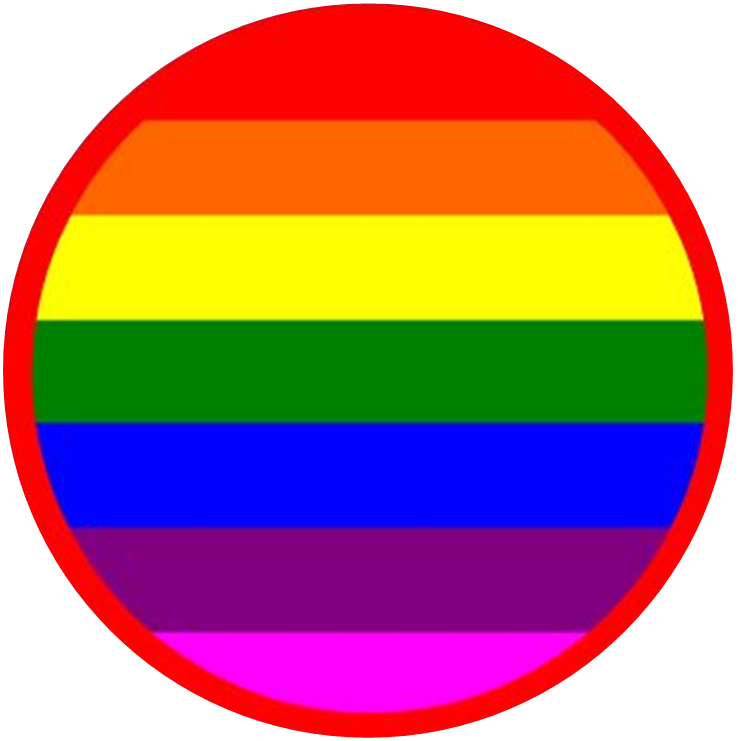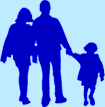© Copyright 2012 Red Circle Rainbow. All Rights Reserved.
Signs &
Gestures
Signs and Gestures - Use Them!
"Clearly, gestures are an important component of successful adult communication. They also play an important role in the language development of young children. In fact, recent studies have shown that the use of purposeful gestures in pre-speech children can actually serve to increase functional language and vocabulary
(Capirci and Volterra, 2008)." -By Deborah Leutkenhoelter, M.A., CCC-SLP-Autism Quarterly
Signs and Gestures also allow communication without being able to hear, or speak. Although almost extinct, some remnants of controversy surrounding the use of signs and gestures and their effect on developing verbal speech still surface occasionally, confusing people about whether or not it is a good idea to teach their child signs and gestures. Signs and gestures are not only a good idea, they are an important part of language learning and comprehension. One anti-sign argument is that using signs will delay language development, "If they get to using their hands, they will be lazy and depend on their hands only, and won't bother trying to speak because it is so difficult." The reverse has been proven to be true.
A second theory regarding signs and gestures, is that a child will continue to use signs with zero comprehension about what the sign means and it will be too confusing for the child. Wow. Really?! So if I make the sign for drink, and produce a drink each time I make the sign, they won't get it? Select this link to read more of Deborah Leutkenhoelter's article: The Link Between Gestures and Language Development.
Linda Hodgden covers this subject nicely in her book: Visual Strategies for Improving Communication, Practical Supports for Autism Spectrum Disorders
Signs & Gestures
Signs to start using now:
Food and Drink Items
Apple
Banana
Chicken
Drink
Eat
Food Items
Juice
Milk
Water
Family Members
Baby
Brother
Dad
Grandma
Grandpa
Mom
Sister
Greetings and Salutations
Hello and Goodbye
Actions, Requests and Feelings
Angry
Bath
Bad
Car
Done
Go
Good
Happy
Help
I don't know
Like
Listen
Look
Love
Mad
More
Movie
No
Pee
Play
Please
Poop
Potty
continued...
signs continued...
Question
Quiet
Run
Sad
Sit
Sleep
Stand
Stop
Talk
Thank you
Tree
Wait
Walk
Want
Yes
Places and Things
Airplane
Ball
Balloon
Book
Car
Dinosaur
Helicopter
House
Outside
Pants
Shirt
Shoes
Train
Common Animal signs
Elephant
Giraffe
Monkey
Cow
Dog
Cat
Horse
Pig
Numbers
How to Get Started Using Signs
I'm sure you already use common gestures, such as waving for Hello and Goodbye.
You will simply expand the number of gestures you use. To the Right is my personal list of signs that I used regularly. You can say almost anything using this list. I found that the easiest way to do this, is to learn it at the time the action is taking place. For example, your child points at a helicopter, you pull out your phone and look up the sign for helicopter. You can show him the sign on the phone screen, or demonstrate it yourself while saying the word. You want him to put on his pants, you look up the sign for pants, and use it each time you say pants. Slowly integrating the signs into your everyday experiences.
Some really great things about using hand signs, is that it doesn't take any auditory processing for your child to understand them. When you give a verbal direction, your child may experience an auditory delay, but when you use a visual sign, your child will process the information instantly. This is particularly helpful when you need them to react right away, or when they are across the playground and you need to ask them, or tell them something.
There are many websites that provide pictures and videos of signs. My favorite is the Michigan State University ASL Browser. It is still free. Many you have to pay a monthly fee to use. Here is another good one that I think is still free: http://www.lifeprint.com/
Website Directory - Quick Links
"Clearly, gestures are an important component of successful adult communication. They also play an important role in the language development of young children."





